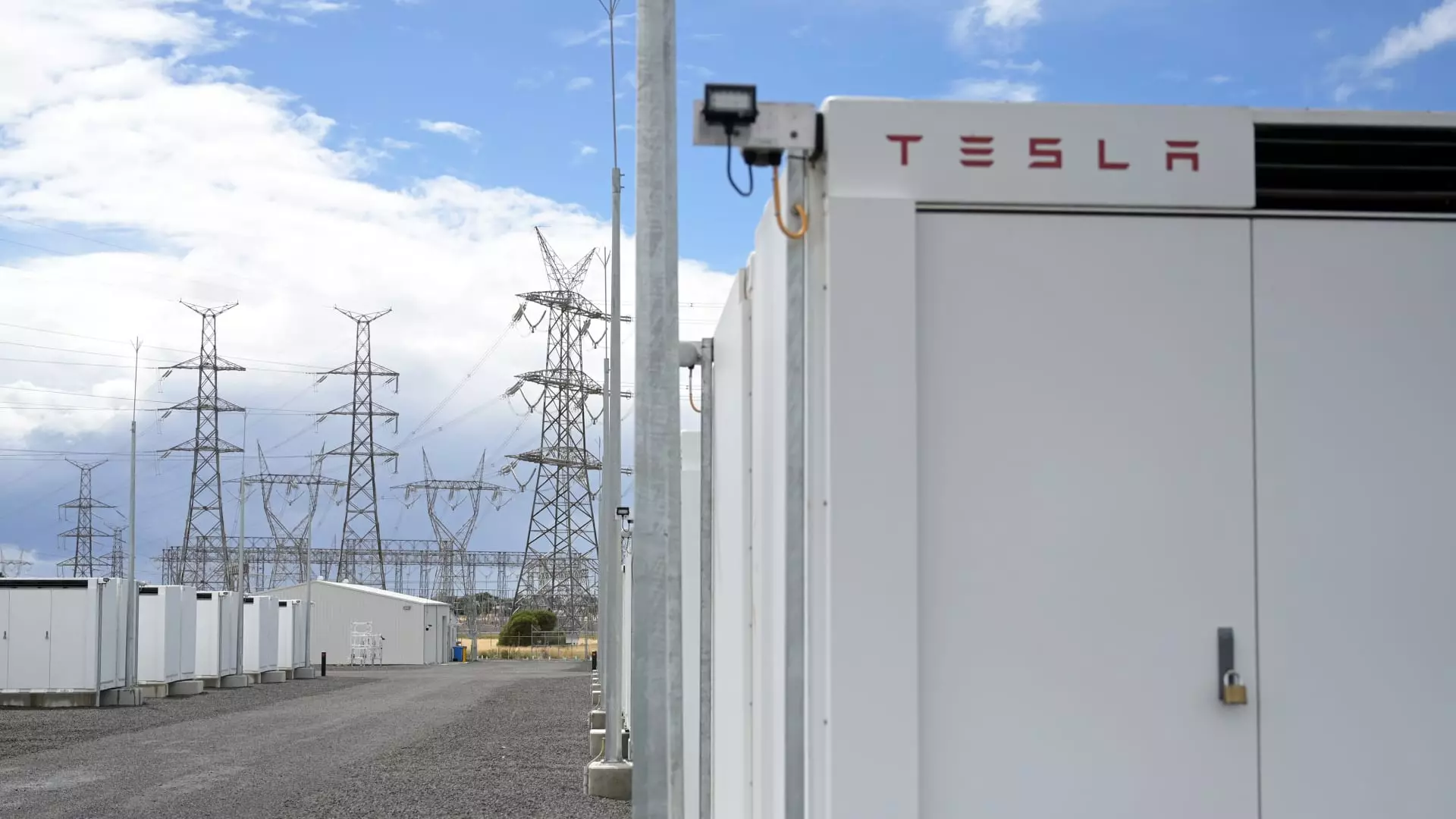Recent developments have showcased Tesla’s ambitious foray into grid-scale energy solutions in China, a move that is as audacious as it is necessary. Amid a backdrop of strained Sino-American relations, Tesla has signed a landmark deal to construct what promises to be the largest grid-scale battery power plant in the country. This $556 million endeavor could redefine not just the company’s future in one of its most crucial markets, but also the landscape of energy storage and distribution within China. As we stand on the precipice of an energy revolution, it’s essential to acknowledge the intricate tapestry of geopolitical and economic factors that influence this decision — a masterstroke on Tesla’s part or a risk-laden gamble?
Transformative Power Solutions
Tesla’s strategic pivot towards utility-scale battery energy storage systems embodies a critical response to the growing imbalance between energy supply and demand, particularly highlighted by the intermittent nature of renewable energy sources like wind and solar. Utility-scale batteries serve as a much-needed buffer, stabilizing electricity grids and allowing them to adapt to fluctuating energy sources. With China aiming to increase its reliance on renewable energy, the demand for sophisticated energy storage solutions cannot be overstated. Tesla’s Megapacks are not just typical batteries; they are the cornerstone of the emerging smart grid infrastructure, promising enhanced stability and efficiency in urban electricity distribution. This innovative venture positions Tesla at the forefront of an inevitable shift in energy paradigms.
Competition from Domestic Giants
However, it’s essential to note the battlefield Tesla is entering is not devoid of competition. In China, local titans like CATL and BYD have a formidable presence with their advancements in battery technology and manufacturing. CATL, in particular, dominates the global battery market, controlling a staggering 40% of its share. This reality raises critical questions about Tesla’s ability to maintain its competitive edge. Collaborating with local suppliers like CATL for battery cells reflects a pragmatic approach; yet, it also signifies a certain vulnerability. Will Tesla be able to innovate and outpace local competitors while typifying the essence of American ingenuity? Or will it find itself caught in a web of domestic rivalries and geopolitical strife?
Geopolitical Repercussions
The backdrop of the U.S.-China trade tensions complicates the narrative further. Tesla’s foray into a significant deal with Chinese local authorities, particularly after tariffs were imposed on imports from China, marks a contentious point in the relationship between these two economic powerhouses. It was, after all, former President Trump’s administration that initiated such tariffs, creating a fraught atmosphere for American businesses in China, including Tesla. Elon Musk, who once positioned himself as a staunch supporter of Trump, now finds himself amid a complex web of trade policies and geopolitical maneuvering that could impact vehicle demand as well as Tesla’s energy storage objectives. This scenario not only reflects Musk’s acute understanding of market dynamics but also underscores the precariousness of tying one’s fortunes to the winds of political change.
The Future of Energy Storage
As global saturation of battery energy storage is projected to escalate substantially in the coming years — the International Energy Agency has reported a capacity surge of 42 gigawatts in 2023 alone — Tesla’s decision could be seen as a prescient alignment with an inevitable trajectory toward smarter energy solutions. China’s commitment to building out its battery storage capacity to 40 gigawatts by 2025 presents an opportunity for Tesla, but it also demands rapid execution and innovation. The necessity for adaptability in an ever-evolving energy landscape cannot be overstressed.
Tesla’s bold leap into the energy sector will be scrutinized closely not just for its immediate business success but also for the overarching implications it harbors for future energy policies. Taking such a step is not merely about grasping market share; it’s about influencing the future of energy consumption and sustainability on a grand scale.


Leave a Reply